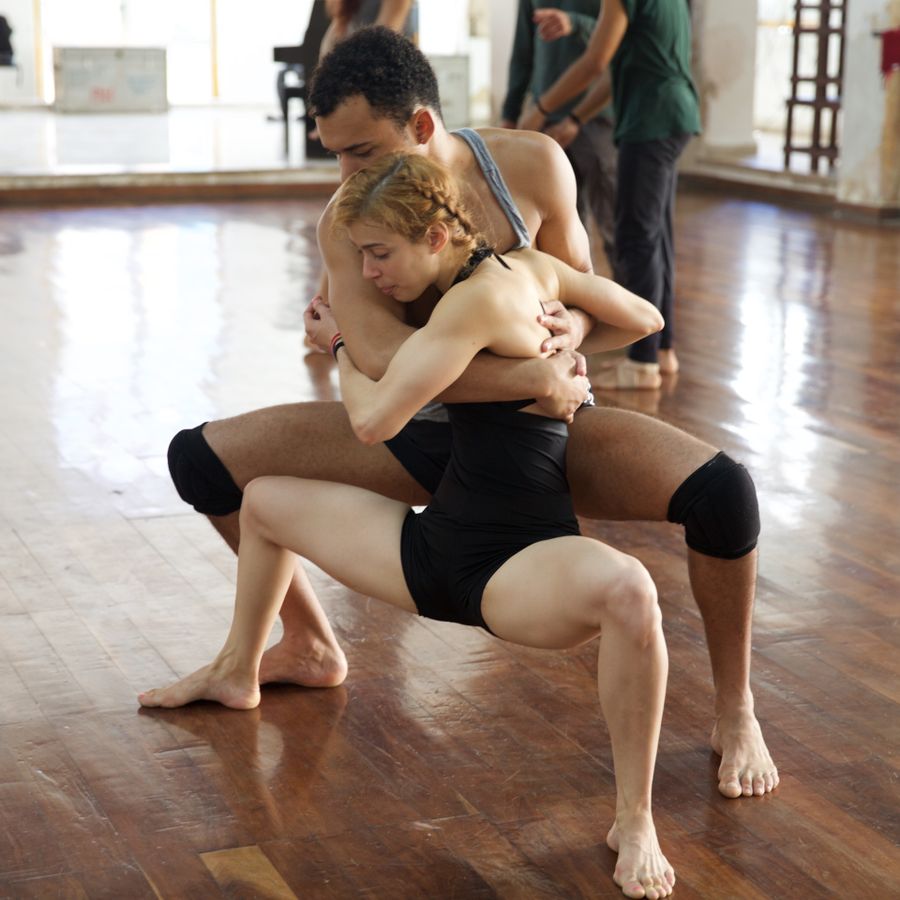
Ohad Naharin on Malpaso Dance Company
By Laura Diffenderfer
Excerpted by Laura Diffenderfer
Israeli choreographer Ohad Naharin, who is the House Choreographer of Batsheva, traveled to Cuba in the summer of 2018 to restage a work from 1986 for the Havana-based Malpaso Dance Company. We sat down with Naharin to discuss the work, Tabula Rasa, and his experience working with this special company.
Can you tell us a bit about Tabula Rasa?
Tabula Rasa originally was choreographed for Pittsburgh Ballet and the dance division of NYU. There was a national choreographic project sponsored by NEA, where ballet companies were matched with contemporary choreographers to create new works, so that's how I got to be invited, by Patricia Wilde, to Pittsburgh Ballet. And there was one condition: that I would use live music… I heard that Arvo Part just released a new recording, of vinyl, titled Tabula Rasa, and I went to a record store and bought the vinyl, and it's one of the most amazing pieces of music I know.
How are the Malpaso dancers different than the dancers you work with in Israel?
Actually, when I am asked about differences, it immediately brings me to similarities, and I am interested in similarities more than I'm interested in differences, because the similarities create for me the common ground for communications. The question is, what kind of similarities?
So for me, what I try, is to open up what is similarities in the dancers of Malpaso [have with] the dancers I work with in Israel: the idea of yielding, the ability to laugh at ourselves, the use of explosive power, and the power of imagination.
So it's much less about what is different, but it's really about…what I research and what I discover, and it's an ongoing thing. I'm discovering things here, too. But again, it's not about looking for differences. I take the differences for granted. They exist, I don't deny them, but I'm less interested in them.
How is Tabula Rasa different from your other work?
Tabula Rasa was choreographed more than 30 years ago, when I had a very different toolbox, and I was much more limited in my ability to help dancers to interpret my work. So when I work on Tabula Rasa today, it's about sharing with them what I discovered last week. And the discovery has to do with the dance, not with the choreography. For me, the act of helping dancers to interpret the work is very much the act of choreographing. I don't separate the idea of helping the dancers to interpret my work from choreographing. It's part of it.
Can you talk about the dance’s structure?
Tabula Rasa has a very simple structure. The movement is very athletic. It has much less of the research that connects to more recent works. It's a lot about how you dance, not what you dance, that moves me when I watch anybody's choreography. I can appreciate the work of choreography, I can appreciate structure, organization, ideas, metaphors, decoration, lights ... I can appreciate, but what can move me is only the dancing.
What have you learned about the dancers of Malpaso?
I am discovering the dancers. They are very different from each other. They have different groups, they have different reason, I feel, for why they dance. I do feel a great hunger, and feel that they are humble, and give themselves, which is really important. I feel their love of dance.
But they are different from each other as dancers are different from each other in any other company. Some are more coordinated, less coordinated, more explosive, less explosive, more sensual, less sensual, quicker, slower, bigger, smaller, so if you mix this group of dancers with another company, almost from anywhere, you will not recognize and be able to see who is from Cuba, or who is [not]... and that is the beauty of dance, too.
There is a distinct moment in Tabula Rasa where the dancers all stand in a line and sway. It stands out, as the dance is very athletic otherwise. What can you tell us about that line?
The line in Tabula Rasa... Actually it’s a piece that didn't change much since I choreographed it, many of my works in more recent [years] have changed a lot. But what changed most in Tabula is the line. The line, as minimal as it was, it used to be busy with gestures. Over the years I took it all, and all I make the people do now is rock for seven minutes.
Dancers need to be convinced that less is better in this case. Not always, but in this case. That they need to create a meditation experience, not for the audience, but for themselves. And once they achieve that, it's fine. And I think we made a breakthrough yesterday with this moment, and I think it will be fine.
To dance, you don't need audience, and the love of dance has nothing to do with performing, it [has] to do with the act of dancing, [which] you can do alone. It's important that dancers—even though they love to perform and they love to show off and the reason they dance is so they can go on stage—that they found their love of dance. That has nothing to do with being in front of an audience. It comes from doing the research, [and] the discovery and the scope of sensation that dancing gives you.


